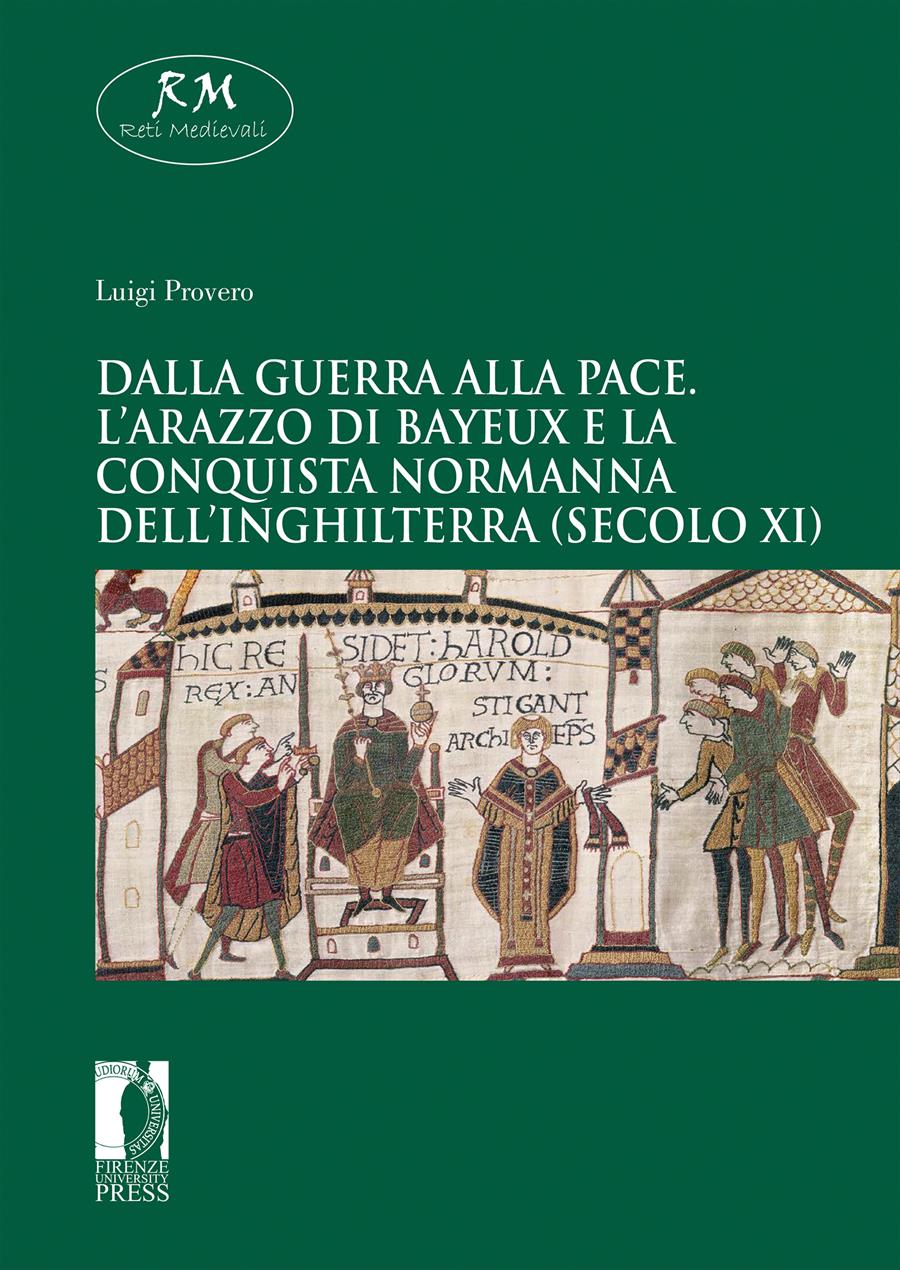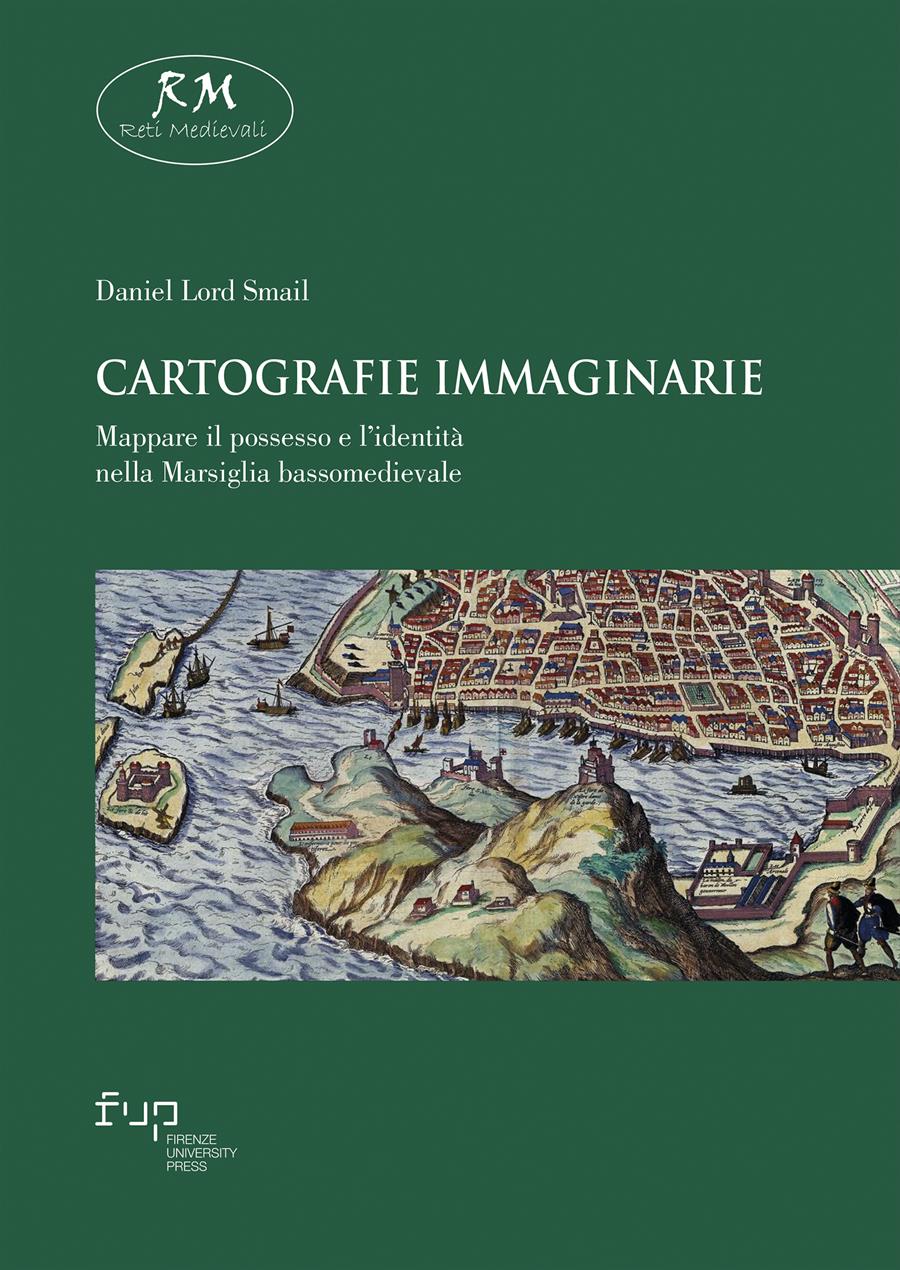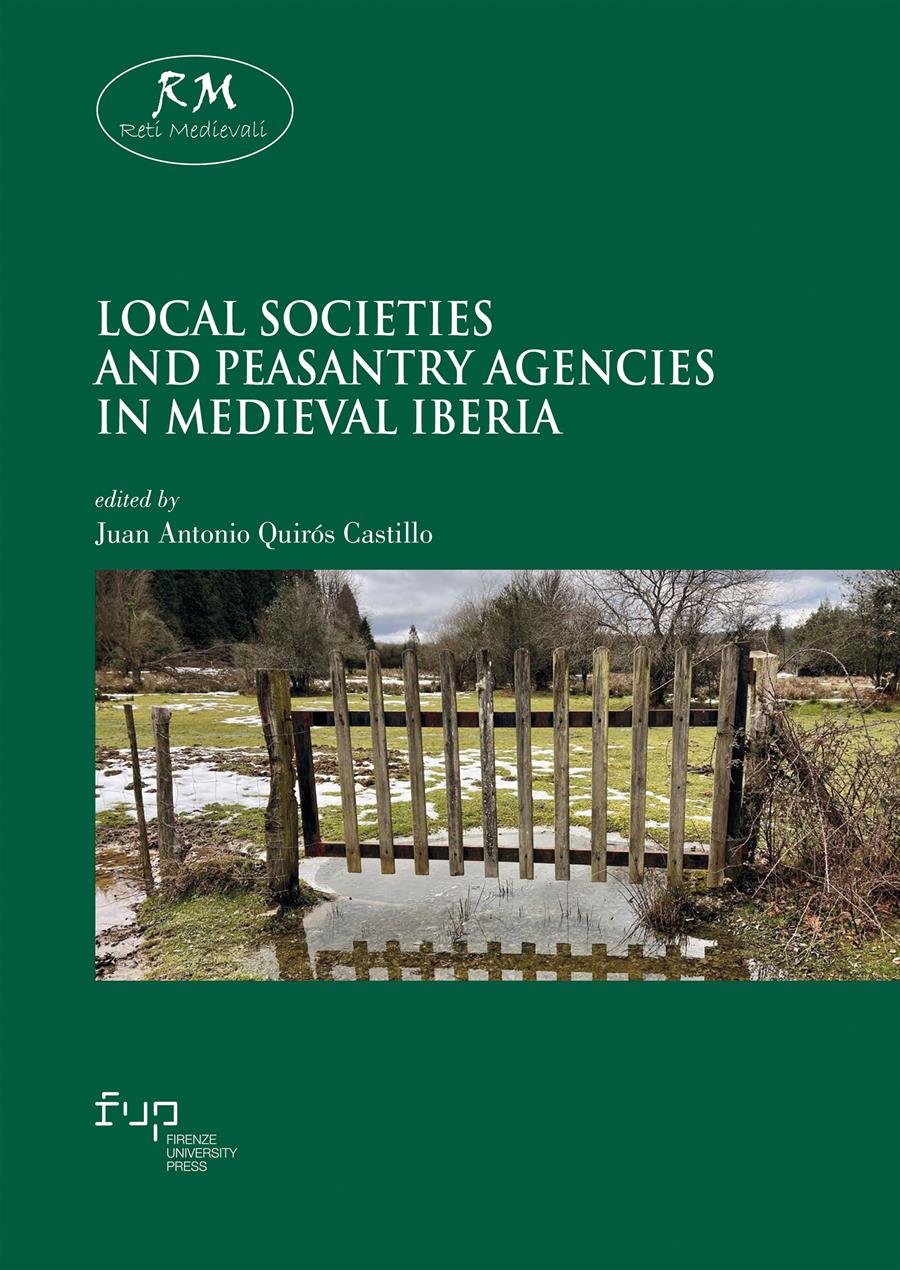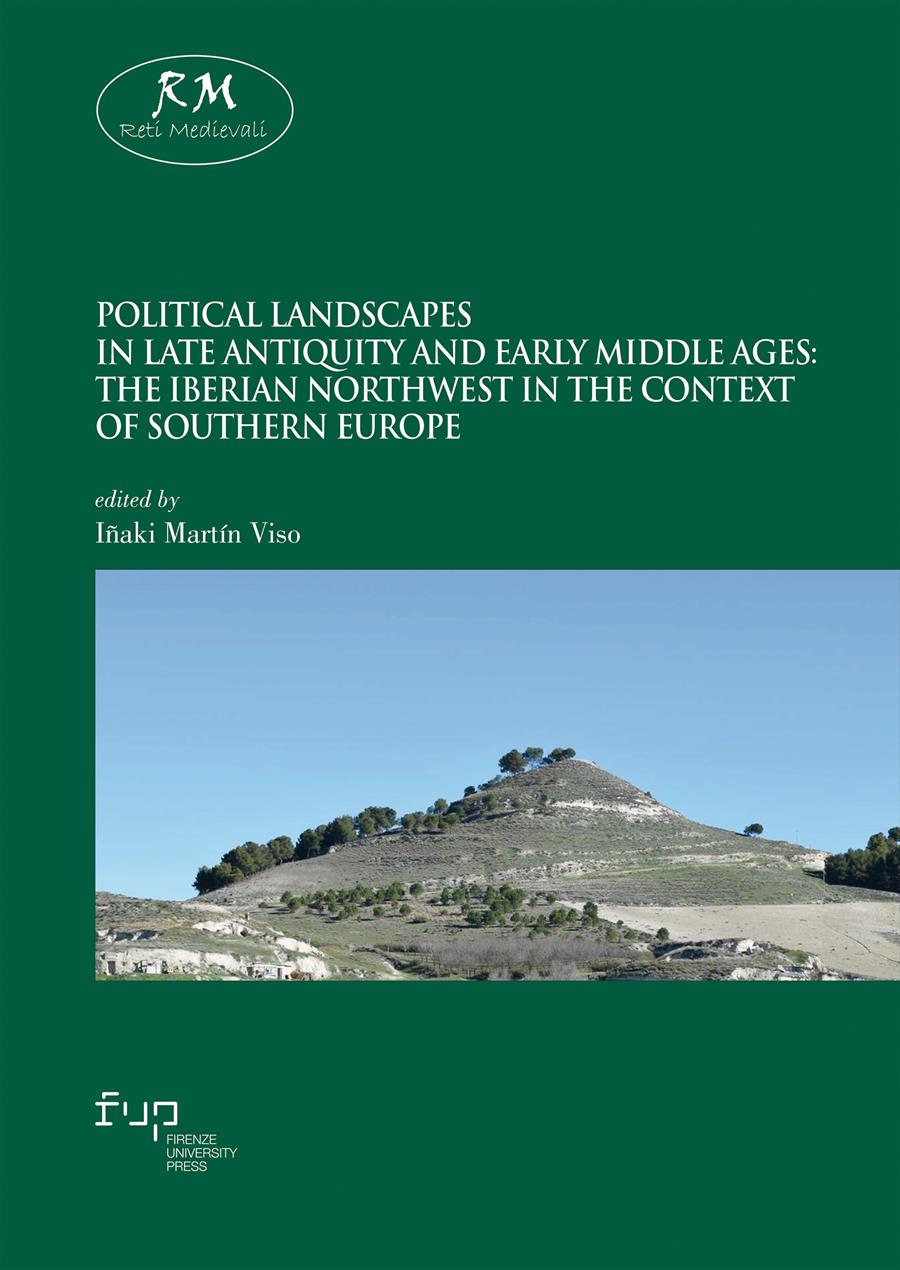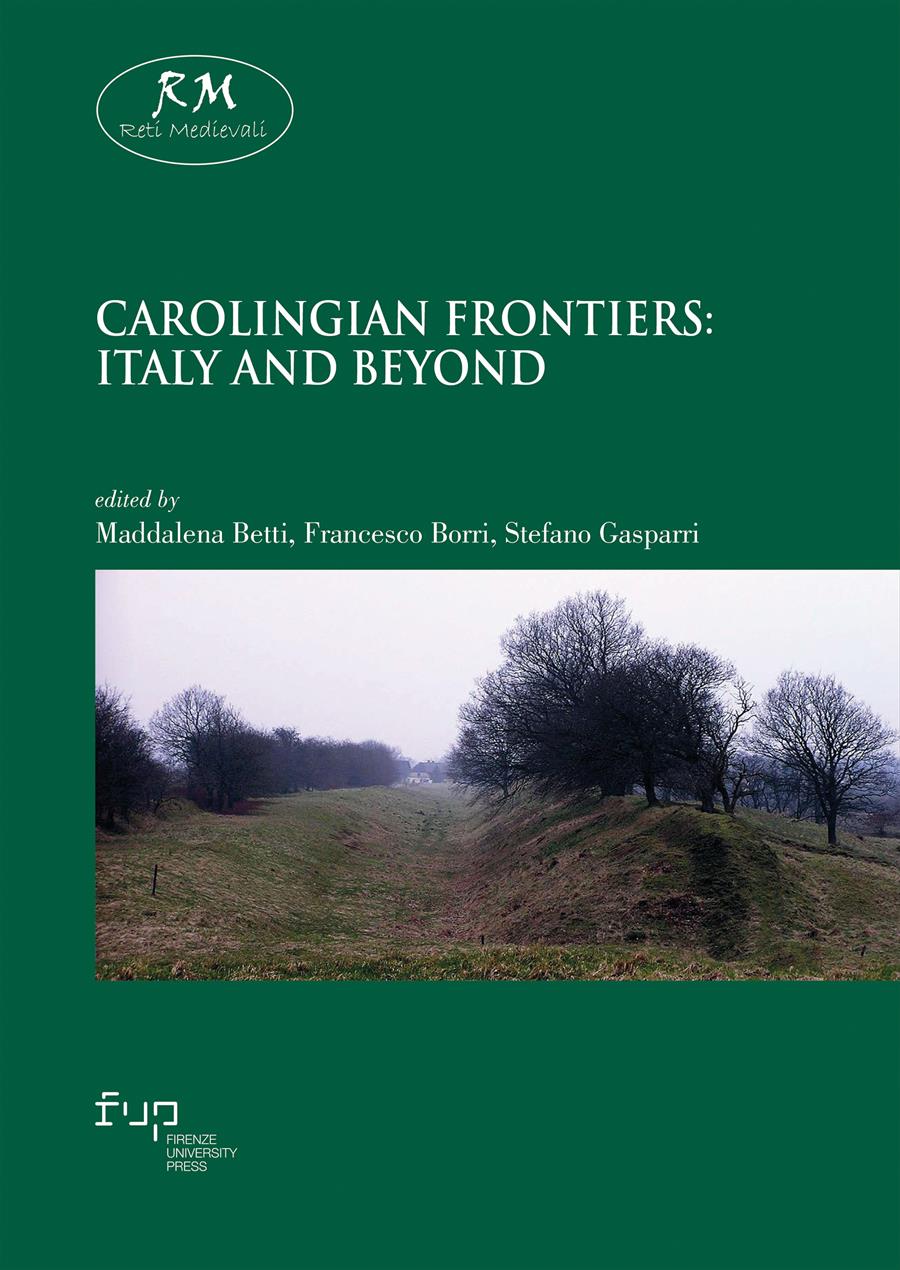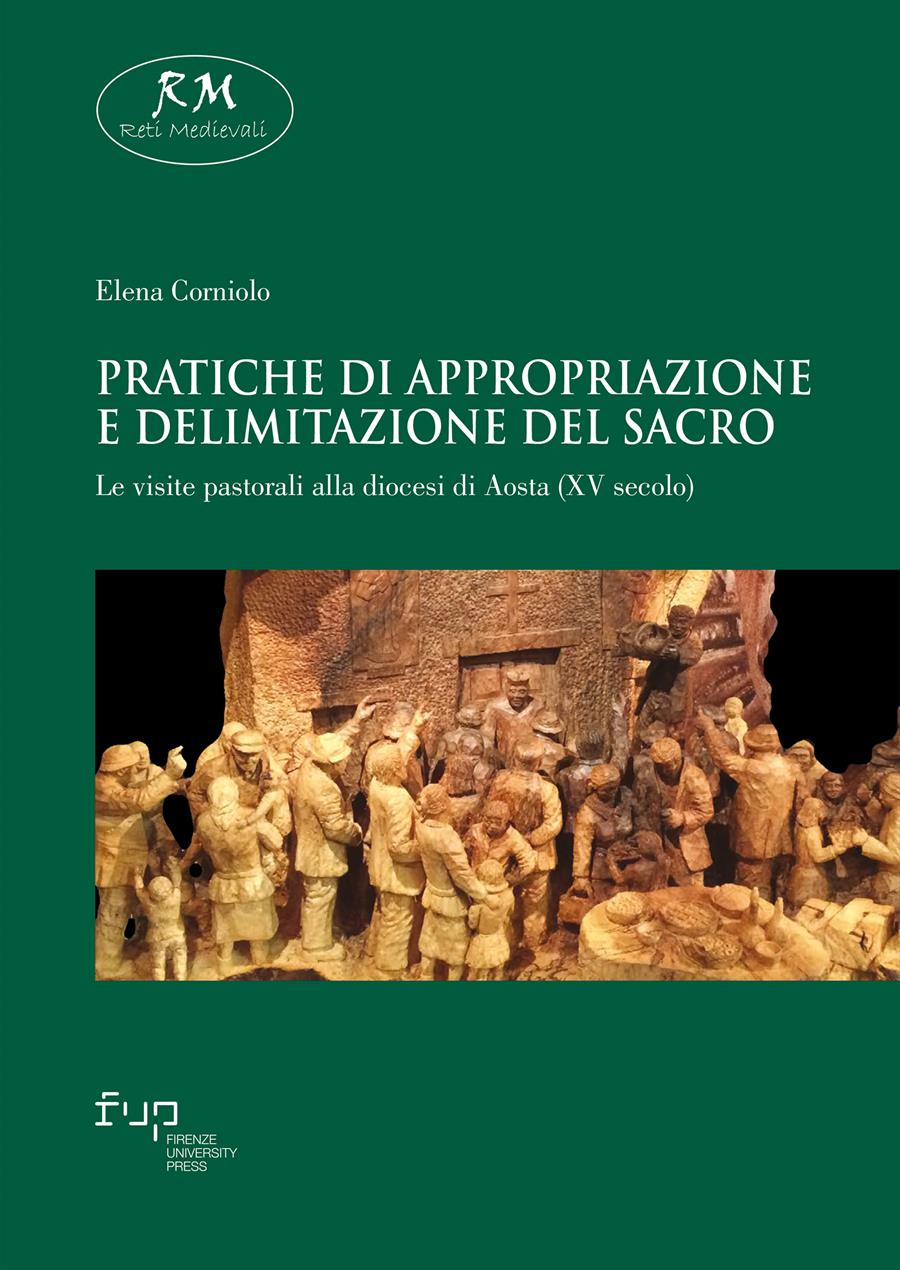Dalla guerra alla pace. L’Arazzo di Bayeux e la conquista normanna dell’Inghilterra (secolo XI)
- Luigi Provero,
The Bayeux Tapestry (or rather, embroidery) is one of the most famous medieval artworks, which narrates in images the conquest of England by the Normans led by Duke William the Conqueror. Images taken from the embroidery are reproduced on thousands of objects evoking the Middle Ages, and at the same time the work has been the subject of hundreds of studies in many European countries, by historians, art historians and narrative scholars. In all of this, some questions and some answers are lacking, in particular with regard to the political culture expressed in the work: there is no doubt that the embroidery is a narrative of the exploits of William the Conqueror, an attempt to reconcile the English and Normans and in part an exaltation of the role of Odo, bishop of Bayeux; but it is also the expression of a series of political ideals and models of order, a reading and an evaluation of the system of contemporary power, organized around the kingdom and based on the primacy of the aristocracy and the value of personal ties. The volume aims to follow this line of research, showing how the embroidery, from many points of view (the political ceremonial, the role of the king, the aristocratic bonds of fidelity), reflects a social imaginary and a series of clearly recognizable political ideals.
- Keywords:
- Middle Ages,
- England,
- Normans,
- Kingship,
- Fidelity,
- DOI: 10.36253/978-88-5518-244-7
- Series: Reti Medievali E-Book
- Scientific Board
- Language: Italian
- Subjects: Medieval History
University of Turin, Italy - ORCID: 0000-0002-4151-1507
- S. Airlie, Private Bodies and the Body Politic in the Divorce Case of Lothar II, in «Past & Present», 161 (1998), pp. 3-38.
- S. Airlie, Narratives of Triumph and Rituals of Submission: Charlemagne’s Mastering of Bavaria, in «Transactions of the Royal Historical Society», s. VI, 9 (1999), pp. 93-119.
- G. Albertoni, Vassalli, feudi, feudalesimo, Roma 2015.
- G. Albertoni, L. Provero, Storiografia europea e feudalesimo italiano tra alto e basso medioevo, in «Quaderni storici», 38 (2003), 112, pp. 243-267.
- G. Albini, Poveri e povertà nel Medioevo, Roma 2016.
- R. Allen Brown, The Battle of Hastings, in «Anglo-Norman Studies», 3 (1980), pp. 1-21.
- G. Arnaldi, Rivisitando le Storia di Rodolfo il Glabro, in Haut Moyen-Âge. Culture, éducation et société, a cura di P. Riché, Nanterre 1990, pp. 546-554.
- F. Barlow, The English Church, 1000-1066. A Constitutional History, London 1963.
- F. Barlow, The King’s evil, in «English Historical Review», 95 (1980), pp. 3-27.
- F. Barlow, Edward the Confessor, Yale 1997.
- F. Barlow, The Godwins. The Rise and Fall of a Noble Dinasty, London 2002.
- X. Barral i Altet, En souvenir du roi Guillaume. La broderie de Bayeux, Paris 2016.
- D. Barthélemy, La chevalerie. De la Germanie antique à la France du XIIe siècle, Paris 2012.
- D. Bates, The Character and Career of Odo, Bishop of Bayeux (1049/50-1097), in «Speculum», 50 (1975), pp. 1-20.
- D. Bates, Normandy before 1066, London 1982.
- D. Bates, 1066: does the date still matter?, in «Historical research», 78 (2005), 202, pp. 443-464.
- D. Bates, William the Conqueror, New Haven - London 2016.
- P. Bauduin, La première Normandie (Xe-XIe siècles). Sur les frontières de la haute Normandie: identité et construction d’une principauté, Caen 2004.
- P. Bauduin, Les modèles anglo-normands en questions, in Nascita di un regno. Poteri signorili, istituzioni feudali e strutture sociali nel Mezzogiorno normanno (1130-1194), Atti delle diciassettesime giornate normanno-sveve, Bari 10-13 ottobre 2006, a cura di R. Licinio e F. Violante, Bari 2008, pp. 51-97.
- The Bayeux Tapestry: new interpretations, a cura di M.K. Foys, K.E. Overbey, D. Terkla, Woodbridge 2009.
- M. Baylé, La Tapisserie de Bayeux et l’ornementation dans l’Europe du Nord-Ouest. Questions de stylistique et de composition, in La Tapisserie de Bayeux: l’art de broder l’Histoire, pp. 303-325.
- A. Becker, Il culto dei morti tra memoria e oblio, in La prima guerra mondiale, a cura di S. Audoin-Rouzeau e J.-J. Becker, II, Torino 2007, pp. 473-486.
- I. Bédat, B. Girault-Kurtzeman, Étude technique de la Broderie de Bayeux, in La Tapisserie de Bayeux: l’art de broder l’Histoire, pp. 83-109.
- B. Bedos, Signes et insignes du pouvoir royal et seigneurial au Moyen Âge: le témoignage des sceaux, in Les pouvoirs de commandement jusqu’à 1610 (Actes du 105e Congrès national des Sociétés savantes, Caen 1980), Paris 1984, pp. 47-62.
- G. Beech, Was the Bayeux Tapestry made in France? The case for St. Florent of Saumur, New York 2005.
- G.I. Berlin, The Fables of the Bayeux Tapestry: an Anglo-Saxon Perpective, in Unlocking the Wordhord: Anglo-Saxon studies in memory of Edward B. Irving Jr., a cura di M.C. Amodio e K. O’Brien O’Keeffe, Toronto 2003, pp. 191-216.
- D. Bernstein, The Mystery of Bayeux Tapestry, Chicago 1987.
- S. Bertelli, Il corpo del re: sacralità del potere nell’Europa medievale e moderna, Firenze 1990.
- M. Bloch, La vie de S. Édouard le Confesseur par Osbert de Clare, in «Analecta Bollandiana», 41 (1923), pp. 5-131.
- M. Bloch, I re taumaturghi. Studi sul carattere sovrannaturale attribuito alla potenza dei re particolarmente in Francia e in Inghilterra, Torino 1973 (Paris 1924).
- M. Bloch, Les formes de la rupture de l’hommage dans l’ancien droit féodal, in M. Bloch, Mélanges historiques, Paris 1936, I, pp. 189-209.
- T. Bolton, The Empire of Cnut the Great. Conquest and the Consolidation of Power in Northern Europe in the Early Eleventh Century, Leiden 2009.
- P. Bouet, La Tapisserie de Bayeux, une œuvre pro-anglaise?, in La Tapisserie de Bayeux: l’art de broder l’Histoire, pp. 197-215.
- P. Bouet, Hastings. 14 octobre 1066, Paris 2010.
- Th. Bredehoft, Textual Histories. Readings in the Anglo-Saxon Chronicle, Toronto 2001.
- M. Brett, Warfare and its restraints in England. 1066-1154, in “Militia Christi” e Crociata nei secoli XI-XIII, Atti della undicesima Settimana internazionale di studio, Mendola 28 agosto - 1 settembre 1989, Milano 1992, pp. 129-144.
- R. Brilliant, The Bayeux Tapestry: A Stripped Narrative for Their Eyes and Ears, in «Word and Image», 7 (1991), pp. 98-126 [riedito in The Study of the Bayeux Tapestry, pp. 111-137].
- N.P. Brooks, H.E. Walker, The Authority and Interpretation of the Bayeux Tapestry, in «Anglo-Norman Studies», 1 (1978), pp. 1-34.
- M. Brown, Chartres comme l’exemplaire féodal: une interprétation de la collection des êpitres et des poèmes de Fulbert de Chartres comme traité sur la fidélité, la loi et le gouvernement, in Fulbert de Chartres, un précurseur de l’Europe médiévale?, a cura di M. Rouche, Paris 2008, pp. 231-242.
- Sh.A. Brown, The Bayeux Tapestry: Why Eustace, Odo and William, in «Anglo-Norman Studies», 12 (1989), pp. 7-28.
- Sh.A. Brown, Cognate Imagery: the Bear, Harold and the Bayeux Tapestry, in King Harold II and The Bayeux Tapestry, pp. 149-160.
- Sh.A. Brown, Auctoritas, Consilium et Auxilium: Images of Authority in the Bayeux Tapestry, in The Bayeux Tapestry: new interpretations, pp. 25-35.
- Sh.A. Brown, The Bayeux Tapestry. Bayeux, Médiathèque Municipale: ms. 1. A Sourcebook, Turnhout 2013.
- Sh.A. Brown, M.W. Herren, The Adelae Comitissae of Baudri of Bourgueuil and the Bayeux Tapestry, in «Anglo-Norman Studies», 16 (1993), pp. 55-73.
- W. Brunsdon Yapp, Animals in medieval art: the Bayeux Tapestry as an example, in «Journal of Medieval History», 13 (1987), pp. 15-73.
- P. Buc, The Dangers of Rituals. Between Early Medieval Topics and Social Scientific Theory, Princeton 2001.
- P. Cammarosano, Italia medievale. Struttura e geografia delle fonti scritte, Roma 1991.
- M.W. Campbell, Aelfgyva: the misterious Lady of the Bayeux Tapestry, in «Annales de Normandie», 34 (1984), pp. 127-145.
- R. Canosa, Etnogenesi normanne e identità variabili. Il retroterra culturale dei Normanni d’Italia fra Scandinavia e Normandia, Torino 2009.
- G. Cantarella, Appunti su Rodolfo il Glabro, in «Aevum», 65 (1991), pp. 279-294.
- G. Cantino Wataghin, L’abbazia dei Santi Pietro e Andrea di Novalesa: il contributo delle indagini archeologiche al recupero della sua memoria, in Novalesa. Nuove luci dall’Abbazia, Milano 2004, pp. 35-57.
- C. Carozzi, Des Daces aux Normands. Le mythe et l’identification d’un peuple chez Dudon de Saint-Quentin, in Peuples du Moyen Âge. Problèmes d’identification. Séminaire ‘Société, idéologies et croyances au Moyen Âge’, a cura di C. Carozzi e H. Taviani-Carozzi, Aix-en-Provence 1996, pp. 7-25.
- E. Carson Pastan, S.D. White, Problematizing Patronage: Odo of Bayeux and the Bayeux Tapestry, in The Bayeux Tapestry: new interpretations, pp. 1-24.
- E. Carson Pastan, S.D. White, The Bayeux Tapestry and its Contexts. A Reassessment, Woodbridge 2014.
- M.H. Caviness, Anglo-Saxon Women, Norman Knights and a ‘Third Sex’ in the Bayeux Embroidery, in The Bayeux Tapestry: new interpretations, pp. 85-118.
- H. Chefneux, Les fables dans la tapisserie de Bayeux, in «Romania», 60 (1934), pp. 1-35 e 153-194.
- M. Chibnall, The World of Orderic Vitalis, Oxford 1984.
- H.B. Clarke, The Identity of the Designer of the Bayeux Tapestry, in «Anglo-Norman Studies», 35 (2013), pp. 119-139.
- H.E.J. Cowdrey, Bishop Ermenfrid of Sion and the Penitential Ordinance following the Battle of Hastings, in «Journal of Ecclesiastical History», 20 (1969), pp. 225-242.
- H.E.J. Cowdrey, Towards an Interpretation of the Bayeux Tapestry, in The Study of the Bayeux Tapestry, pp. 93-110.
- H.E.J. Cowdrey, Lanfranc, the Papacy, and the See of Canterbury, in Lanfranco di Pavia e l’Europa del secolo XI, pp. 439-500.
- H.E.J. Cowdrey, King Harold II and the Bayeux Tapestry: a Critical Introduction, in King Harold II and The Bayeux Tapestry, pp. 1-15.
- N. D’Acunto, I laici nella Chiesa e nella società secondo Pier Damiani. Ceti dominanti e riforma ecclesiastica nel secolo XI, Roma 1999 (Nuovi studi storici, 50).
- R.H.C. Davis, The Carmen de Hastingae Proelio, in «English Historical Review», 93 (1978), pp. 141-161.
- R.H.C. Davis, L.J. Engels, The Carmen de Hastingae Proelio: a discussion, in «Anglo-Norman Studies», 2 (1980), pp. 1-20.
- G. De Luna, Il corpo del nemico ucciso. Violenza e morte nella guerra contemporanea, Torino 2006.
- K. de Vries, The Norwegian Invasion of England in 1066, Woodbridge 1999.
- C.R. Dodwell, The Bayeux Tapestry and the French secular Epic, in The Study of the Bayeux Tapestry, pp. 47-62.
- G. Duby, La domenica di Bouvines. 27 luglio 1214, Torino 1977 (Paris 1973).
- G. Duby, Lo specchio del feudalesimo. Sacerdoti, guerrieri e lavoratori, Roma-Bari 1980 (Paris 1978).
- J. Duft, Die Abtei St. Gallen, I, Beiträge zur Erforschung ihrer Manuskripte, Sigmaringen 1990.
- L.G. Duggan, Armsbearing and the Clergy in the History and Canon Law of Western Christianity, Woodbridge 2013
- B. English, Le couronnement d’Harold dans la Tapisserie de Bayeux, in La Tapisserie de Bayeux: l’art de broder l’Histoire, pp. 347-381.
- C. Erdmann, Alle origini dell’idea di crociata, Spoleto 1996 (Stuttgart 1935).
- A. Fiore, Il mutamento signorile. Assetti di potere e comunicazione politica nelle campagne dell’Italia centro-settentrionale (1080-1130 c.), Firenze 2017.
- G.G. Fissore, I monasteri subalpini e la strategia del documento scritto, in Dal Piemonte all’Europa: esperienze monastiche nella società medievale, Atti del XXXIV Congresso storico subalpino nel Millenario di San Michele della Chiusa, Torino 27-29 maggio 1985, Torino 1988, pp. 87-105.
- R. Fleming, Domesday Estates of the King and the Godwines: A Study in Late Saxon Politics, in «Speculum», 58 (1983), pp. 987-1007.
- V.I.J. Flint, La Tapisserie de Bayeux, l’évêque et les laïcs, in La Tapisserie de Bayeux: l’art de broder l’Histoire, pp. 217- 233.
- J. Flori, La cavalleria medievale, Bologna 2002 (Paris 1998).
- R. Folz, Les saints rois du Moyen Âge en Occident. VI-XIII siècles, Bruxelles 1984.
- M.K. Foys, Pulling the Arrow Out: the Legend of Harold’s Death and the Bayeux Tapestry, in The Bayeux Tapestry: new interpretations, pp. 158-175.
- M.K. Foys, K.E. Overbey, D. Terkla, Introduction: Fifty years of (Re)Producing the Bayeux Tapestry, in The Bayeux Tapestry: new interpretations, pp. XII-XVI.
- J. France, L’apport de la Tapisserie de Bayeux à l’histoire de la guerre, in La Tapisserie de Bayeux: l’art de broder l’Histoire, pp. 289-300.
- M. Gallina, Incoronati da Dio: per una storia del pensiero politico bizantino, Roma 2016.
- R. Gameson, The Origin, Art, and Message of the Bayeux Tapestry, in The Study of the Bayeux Tapestry, pp. 157-211.
- G. Gandino, Il vocabolario politico e sociale di Liutprando di Cremona, Roma 1995.
- G. Gandino, Contemplare l’ordine. Intellettuali e potenti dell’alto medioevo, Napoli 2004.
- G. Garnett, Conquered England: Kingship, Succession and Tenure, 1066-1166, Oxford 2007.
- A. Gautier, Comment Harold prêta serment: circonstances et interprétations d’un rituel politique, in «Cahiers de Civilisation Médiévale», 55 (2012), pp. 33-56.
- P.J. Geary, Aristocracy in Provence. The Rhône Basin at the Dawn of the carolingian Age, Stuttgart 1985.
- D.M.G. Gerrard, The Church at War. The military activities of bishops, abbots and other clergy in England, c. 900-1200, London New York 2017.
- B. Golding, Robert of Mortain, in «Anglo-Norman Studies», 13 (1990), pp. 119-144.
- J.L. Grassi, The Vita Ædwardi Regis: the Hagiographer as Insider, in «Anglo-norman studies», 26 (2003), pp. 87-102.
- A. Grotans, «Sih dir selbo lector». Cues for Reading in Tenth- and Eleventh-Century St. Gall, in «Scriptorium», 51 (1997), pp. 251-302.
- B. Guenée, Storia e cultura storica nell’occidente medievale, Bologna 1991 (Paris 1980).
- A. Guerreau, Caccia, in Dizionario dell’Occidente medievale, a cura di J. Le Goff, J.-Cl. Schmitt, Torino 2003 (Paris 1999), I, pp. 119-131.
- C. Hart, The Bayeux Tapestry and Schools of Illumination at Canterbury, in «Anglo-Norman Studies», 22 (1999), pp. 117-167.
- C. Henige, Putting the Bayeux Tapestry in its Place, in King Harold II and The Bayeux Tapestry, pp. 125-137.
- L. Hermann, Les Fables antiques de la broderie de Bayeux, Bruxelles 1964.
- C. Hicks, The Bayeux Tapestry: the Life Story of a Masterpiece, London 2006.
- D. Hull, La Tapisserie de Bayeux, la reconstitution d’un texte, in La Tapisserie de Bayeux: l’art de broder l’Histoire, pp. 383-402.
- D. Iogna Prat, Le «baptême» du schéma des trois ordres fonctionnels. L’apport de l’école d’Auxerre dans la seconde moitié du IXe siècle, in «Annales E.S.C.», 41 (1986), pp. 101-126.
- A.L. Janssen, La redécouverte de la Tapisserie de Bayeux, in «Annales de Normandie», 11 (1961), pp. 179-195.
- S. Jurasinski, The Rime of King William and its Analogues, in «Neophilologus», 88 (2004), pp. 131-144.
- E. Kantorowicz, I due corpi del Re. L’idea di regalità nella teologia politica medievale, Torino 2012 (Princeton 1957).
- King Harold II and The Bayeux Tapestry, a cura di G.R. Owen-Crocker, Woodbridge 2005.
- G. Koziol, Begging Pardon and Favor. Ritual and Political Order in Early Medieval France, Ithaca London 1992.
- G. Koziol, The dangers of polemic: Is ritual still an interesting topic of historical study?, in «Early medieval Europe», 11 (2002), pp. 367-388.
- A. Kuhn, Der Teppich von Bayeux in seinen Gebärden: Versuch einer Deutung, in «Studi medievali», s. 3a, 33 (1992), pp. 1-71.
- R. Landes, Relics, Apocalypse and the Deceits of History. Ademar of Chabannes, 989-1034, Cambridge (MS) London 1995.
- Lanfranco di Pavia e l’Europa del secolo XI, nel IX centenario della morte (1089-1989), Atti del Convegno internazionale di studi, Pavia 21-24 settembre 1989, a cura di G. d’Onofrio, Roma 1993.
- S. Larratt Keefer, Body Language: a Graphic Commentary by the Horses of the Bayeux Tapestry, in King Harold II and The Bayeux Tapestry, pp. 93-108.
- J. Le Goff, San Luigi, Torino 1996 (Paris 1996).
- J. Le Goff, I riti, il tempo, il riso: cinque saggi di storia medievale, Roma-Bari 2001.
- J. Le Goff, Il re nell’Occidente medievale, Roma-Bari 2006.
- R. Le Jan, Frankish giving of arms and rituals of power: continuity and change in the Carolingian period, in Rituals of Power. From Late Antiquity to the Early Middle Ages, a cura di F. Theuws e J. Nelson, Leiden-Boston-Köln 2000, pp. 281-309.
- A. Levé, La tapisserie de la reine Mathilde dite la Tapisserie de Bayeux, Paris 1919.
- B.J. Levy, Les trois fonctions du rhytme narratif de la Tapisserie de Bayeux, in La Tapisserie de Bayeux: l’art de broder l’Histoire, pp. 327-345.
- M.J. Lewis, Identity and Status in the Bayeux Tapestry: The Iconographic and Artefactual Evidence, in «Anglo-Norman Studies», 29 (2006), pp. 100-120.
- S. Lewis, The Rhetoric of Power in the Bayeux tapestry, Cambridge 1999.
- M. Lieberman, A New Approach to the Knighting Ritual, in «Speculum», 90 (2015), pp. 391-423.
- F. Lifshitz, Dudo’s Historical Narrative and the Norman Succession of 996, in «Journal of Medieval History», 20 (1994), pp. 101-120.
- C. Marabelli, Un profilo di Lanfranco dalle sue «lettere», in Lanfranco di Pavia e l’Europa del secolo XI, pp. 500-519.
- N. Marafioti, The King’s Body. Burial and Succession in Late Anglo-Saxon England, Toronto Buffalo London 2014.
- F. Mazel, Féodalités. 888-1180, Paris 2010.
- J.B. McNulty, The Lady Aelfgyva in the Bayeux Tapestry, in «Speculum», 55 (1980), pp. 659-680.
- C. Morton, Pope Alexander II and the Norman Conquest, in «Latomus», 34 (1975), 2, pp. 362-382.
- J. Nelson, Politics and Ritual in Early Medieval Europe, London 1986.
- J. Nelson, Carolingian royal funerals, in Rituals of Power. From Late Antiquity to the Early Middle Ages, a cura di F. Theuws e J. Nelson, Leiden Boston Köln 2000, pp. 131-184.
- F. Neveux, La Tapisserie de Bayeux en tant que source originale, in La Tapisserie de Bayeux: l’art de broder l’Histoire, pp. 171-195.
- O. Niccoli, I sacerdoti, i guerrieri, i contadini. Storia di un’immagine della società, Torino 1979.
- K.E. Overbey, Taking Place: Reliquaries and Territorial Authority in the Bayeux embroidery, in The Bayeux Tapestry: new interpretations, pp. 36-50.
- G.R. Owen-Crocker, The Bayeux ‘Tapestry’: culottes, tunics and garters and the making of the hanging, in «Costume», 28 (1994), pp. 1-9 [ora in G.R. Owen-Crocker, The Bayeux Tapestry. Collected Papers].
- G.R. Owen-Crocker, Telling a tale: narrative techniques in the Bayeux Tapestry and the Old English epic Beowulf, in Medieval Art: recent perspectives, a cura di G.R. Owen-Crocker e T. Graham, Manchester 1998, pp. 40-59 [ora in G.R. Owen-Crocker, The Bayeux Tapestry. Collected Papers].
- G.R. Owen-Crocker, The Bayeux “Tapestry”: invisible seams and visible boundaries, in «Anglo-Saxon England», 31 (2002), pp. 257-273 [ora in G.R. Owen-Crocker, The Bayeux Tapestry. Collected Papers].
- G.R. Owen-Crocker, Brothers, Rivals and the Geometry of the Bayeux Tapestry, in King Harold II and The Bayeux Tapestry, pp. 109-123 [ora in G.R. Owen-Crocker, The Bayeux Tapestry. Collected Papers].
- G.R. Owen-Crocker, The Interpretation of Gesture in the Bayeux Tapestry, in «Anglo-Norman Studies», 29 (2006), pp. 145-178 [ora in G.R. Owen-Crocker, The Bayeux Tapestry. Collected Papers].
- G.R. Owen-Crocker, Reading the Bayeux Tapestry through Canterbury eyes, in Anglo-Saxons. Studies Presented to Cyril Roy Hart, a cura di S. Keynes e A.P. Smyth, Dublin 2006, pp. 243-265 [ora in G.R. Owen-Crocker, The Bayeux Tapestry. Collected Papers].
- G.R. Owen-Crocker, Dress and Authority in the Bayeux Tapestry, in Aspects of Power and Authority in the Middle Ages, a cura di B. Bolton e C. Meek, Turnhout 2007, pp. 53-72 [ora in G.R. Owen-Crocker, The Bayeux Tapestry. Collected Papers].
- G.R. Owen-Crocker, Stylistic variation and Roman influence in the Bayeux Tapestry, in The Bayeux Tapestry revisited, a cura di M. Crafton, in «Peregrinations», 2, (2009), 4, pp. 51-96 [ora in G.R. Owen-Crocker, The Bayeux Tapestry. Collected Papers].
- G.R. Owen-Crocker, The Bayeux Tapestry. Collected Papers, Farnham 2012.
- A. Paravicini Bagliani, Il corpo del papa, Torino 1984.
- M. Pastoureau, L’orso. Storia di un re decaduto, Torino 2008 (Paris 2007).
- M. Pastoureau, Bestiari del Medioevo, Torino 2012 (Paris 2011).
- G. Picasso, Lanfranco e la riforma gregoriana, in Lanfranco di Pavia e l’Europa del secolo XI, pp. 425-438.
- F. Prinz, Clero e guerra nell’alto medioevo, Torino 1994 (Stuttgart 1971).
- L. Provero, Monaci e signori nel Piemonte centromeridionale, fra dialettica e partecipazione, in Il monachesimo del secolo XI nell’Italia nordoccidentale, Atti dell’VIII Convegno di studi storici sull’Italia benedettina, San Benigno Canavese, 28 settembre-1° ottobre 2006, a cura di A. Lucioni, Cesena 2010, pp. 169-189.
- L. Provero, Nostalgia del reino: los monasterios italianos y la crisis imperial del siglo XI, in La construcción medieval de la memoria regia, a c. di A. Rodriguez Lopez e P. Martinez Sopena, Valencia 2011, pp. 59-69.
- L. Provero, Contadini e potere nel Medioevo. Secoli IX-XV, Roma 2020.
- O. Renaudeau, Problèmes d’interprétation du costume d’après la Broderie de Bayeux, in La Tapisserie de Bayeux: l’art de broder l’Histoire, pp. 237-259.
- S. Reynolds, Feudi e vassalli: una nuova interpretazione delle fonti medievali, Roma 2004 (Oxford 1994).
- S.J. Ridyard, The Royal Saints of Anglo-Saxon England: a Study of West Saxon and East Anglian Cults, Cambridge 2008.
- E. Riversi, La memoria di Canossa. Saggi di contestualizzazione delle Vita Mathildis di Donizone, Pisa 2013.
- R. Schaab, Mönch in Sankt Gallen. Zur inneren Geschichte eines frühmittelalterlichen Klosters, Ostfildern 2003.
- J.-C. Schmitt, Il gesto nel medioevo, Roma-Bari 1990 (Paris 1990).
- J.-C. Schmitt, Broder les rythmes. À propos de la Tapisserie de Bayeux, in «Intermédialités: histoire et théorie des arts, des lettres et des techniques / Intermediality: History and Theory of the Arts, Literature and Technologies», 16 (2010), pp. 23-34 [ora in J.-C. Schmitt, Les rhytmes au Moyen Âge, Paris 2016, pp. 531-547].
- E. Searle, Fact and Pattern in Heroic History: Dudo of Saint-Quentin, in «Viator», 15 (1984), pp. 119-138.
- E. Searle, Predatory Kinship and the Creation of Norman Power, 840-1066, Berkeley Los Angeles London 1988.
- G. Sergi, L’aristocrazia della preghiera. Politica e scelte religiose nel medioevo italiano, Roma 1994.
- G. Sergi, I confini del potere. Marche e signorie fra due regni medievali, Torino 1995.
- A.A. Settia, Rapine, assedi, battaglie. La guerra nel medioevo, Roma-Bari 2002.
- L. Shopkow, The Carolingian World of Dudo of Saint-Quentin, in «Journal of Medieval History», 15 (1989), pp. 19-37.
- M.F. Smith, Archbishop Stigand and the Eye of the Needle, in «Anglo-Norman Studies», 16 (1993), pp. 197-219.
- P. Stafford, Queen Emma and Queen Edith. Queenship and Women’s Power in Eleventh-Century England, Malden 1997.
- F.M. Stenton, William the Conqueror and the Rule of the Normans, London 1908.
- The Study of the Bayeux Tapestry, a cura di R. Gameson, Woodbridge 1997
- G. Tabacco, Spiritualità e cultura nel medioevo. Dodici percorsi nei territori del potere e della fede, Napoli 1993.
- La Tapisserie de Bayeux: l’art de broder l’Histoire, Actes du colloque de Cerisy-la-Salle, 1999, a cura di P. Bouet, B. Levy e F. Neveux, Caen 2004.
- F.P. Terlizzi, La regalità sacra nel medioevo? L’Anonimo Normanno e la Riforma romana (secc. XI-XII), Spoleto 2007.
- F.P. Terlizzi, Hastings 1066. La battaglia e il mito, in «Bullettino dell’Istituto storico italiano per il medio evo e Archivio muratoriano», 117 (2015), pp. 103-137.
- E. van Houts, The Memory of 1066 in Written and Oral Traditions, in «Anglo-Norman Studies», 19 (1996), pp. 167-180.
- A. Verney, C. Berthelot, A. Daret, J. Chauveau, P.-Y. Buard, J. Roger, C. Binet, Redocumentariser la Tapisserie de Bayeux : base de données documentaire et système d’informations spatialisées, in «Tabularia [En ligne], Les sources des mondes normands à l’heure du numérique», on line il 19 dicembre 2018 (< https://journals.openedition.org/tabularia/3278 >) [ultima consultazione giugno 2020].
- W. Vogler, Schizzo della storia dell’abbazia di San Gallo, in La abbazia San Gallo, a cura di W. Vogler, Milano 1991, pp. 9-23.
- N. Webber, The Evolution of Norman Identity, 911-1154, Woodbridge 2005.
- O.K. Werckmeister, The political Ideology of the Bayeux Tapestry, in «Studi medievali», s. 3a, 17 (1976), pp. 535-595.
- S.D. White, The Beasts Who Talk on the Bayeux Embroidery: The Fables Revisited, in «Anglo-Norman Studies», 34 (2011), pp. 209-236.
- A. Williams, Land and power in the eleventh-century: the estates of Harold Godwineson, in «Anglo-Norman Studies», 3 (1980), pp. 171-187.
- P. Wormald, Legal Culture in the Early Medieval West. Law as Text, Image and Experience, London - Rio Grande 1999.
- Publication Year: 2020
- Pages: 248
- eISBN: 978-88-5518-244-7
- Content License: CC BY 4.0
- © 2020 Author(s)
- Publication Year: 2020
- Pages: 248
- ISBN: 978-88-5518-243-0
- Content License: CC BY 4.0
- © 2020 Author(s)
Bibliographic Information
Book Title
Dalla guerra alla pace. L’Arazzo di Bayeux e la conquista normanna dell’Inghilterra (secolo XI)
Authors
Luigi Provero
Peer Reviewed
Number of Pages
248
Publication Year
2020
Copyright Information
© 2020 Author(s)
Content License
Metadata License
Publisher Name
Firenze University Press
DOI
10.36253/978-88-5518-244-7
ISBN Print
978-88-5518-243-0
eISBN (pdf)
978-88-5518-244-7
eISBN (xml)
978-88-5518-246-1
Series Title
Reti Medievali E-Book
Series ISSN
2704-6362
Series E-ISSN
2704-6079
